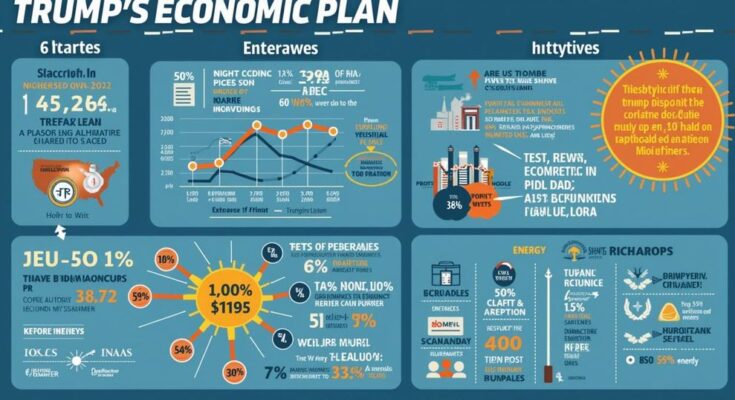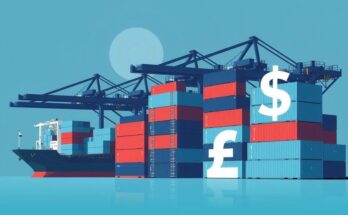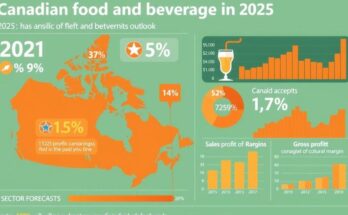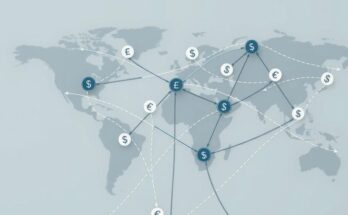Donald Trump’s economic plan focuses on tariffs to rejuvenate US manufacturing and reduce costs, claiming it will compel foreign nations to rectify trade imbalances. However, economists warn that these tariffs may lead to higher consumer prices and disrupt international trade, complicating the potential benefits of his tax reduction proposals. The plan faces skepticism regarding its efficacy and requires bipartisan support for implementation.
In his ambitious economic plan, Republican presidential candidate Donald Trump champions the revival of American manufacturing, leaning heavily on tariffs to boost revenues and compel foreign nations, particularly China, to “pay us back” for economic injustices he claims have persisted for decades. His proposed tariffs, which range from 10% to a staggering 200% on specific imports, are designed to draw manufacturing back to US soil and alleviate costs for Americans, yet experts caution that the realities may spell higher prices for consumers and disrupt the international trade landscape. As the November election approaches, alarms have been raised regarding potential inflation spikes, with predictions suggesting that a universal tariff could elevate consumer prices by 1.3 percentage points. Despite his assurances, analysts like Bernard Yaros from Oxford Economics envision a reality where Tump’s policies lead to 0.6 percentage points of inflation at peak levels, demonstrating that the impact of tariffs may ultimately burden consumers. Moreover, Trump’s rhetoric suggests a longing for a bygone manufacturing era: “Without tariffs, we have a busted country,” he said, portraying tariffs as the golden key to redo the structural foundations of the economy. However, experts emphasize that tariffs will not inherently restore manufacturing abandoned decades ago; the infrastructure needed to revitalize production is either inadequate or nonexistent. On another front, Trump vows to extend expiring tax cuts and further reduce corporate income taxes, ideas that seem to conflict with projected revenue losses posed by his tariff plans. The Tax Foundation warns that tariffs might negate the advantages of tax reductions, complicating the economic recovery process. As trade dynamics transform, with US-China exchanges potentially reduced by 70%, the impacts extend far beyond borders. Trump envisions establishing a “reciprocal trade act” to level the playing field between the US and nations imposing taxes on American goods, yet cooperation from Congress remains a formidable hurdle. Simultaneously, Trump promises to tackle inflation head-on by slashing energy costs, with plans hinting at deregulating the oil and gas sector. However, skepticism looms over the feasibility of achieving significant production surges due to the influence of stakeholders in major energy companies. His stance on agriculture aims to curtail foreign imports, a move that could backfire by instigating retaliation that would adversely affect US farmers reliant on exports. In summary, Trump’s economic strategy is framed as a purveyor of patriotism and fiscal prudence, yet the intricate web of tariffs, tax cuts, and international trade relations poses intricate challenges, leaving economic experts questioning the tangible benefits and potential pitfalls.
Donald Trump’s economic plan centers around a series of tariffs intended to revive US manufacturing and reduce consumer costs. He cites foreign competitors, particularly China, as antagonists in a long-standing trade imbalance, claiming his policies will enable the US to reclaim its economic strength. However, many economists dispute the efficacy of these tariffs, emphasizing the risk they pose for consumer prices and the potential upheaval in global trade patterns. The backdrop of this discussion includes an election cycle where economic performance is a pivotal topic, leading to intense scrutiny of Trump’s proposals and the feasibility of their implementation without bipartisan support.
In essence, Trump’s economic proposals are bold and evocative, promising a resurgence of US manufacturing and lower consumer costs through tariffs and tax reforms. However, the practical implications of these policies raise significant concerns about inflation risks and their impact on international trade relationships. While he seeks to protect American interests, the road ahead is fraught with challenges, requiring careful navigation through contentious trade dynamics and potential retaliatory measures from global partners.
Original Source: www.france24.com



